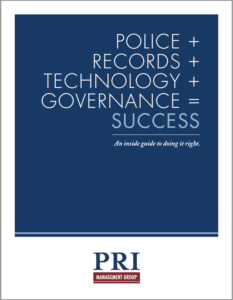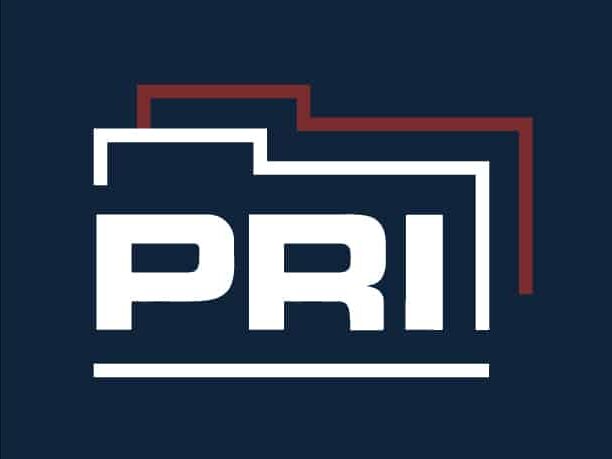TIM GEHRING, CONSULTANT
PRI MANAGEMENT GROUP
March 2023
Article PDF
The familiar story goes something like this: “Our agency got a grant and purchased body-worn cameras for our officers. Now we’re able to meet the recent mandates of our state legislature and easily share videos with our DA. We also developed new policies for releasing videos to the public, which really helped us be more transparent. There’s only one problem….we struggle to find the videos once they’re uploaded”.
Incorrect tagging of videos is a seemingly systemic problem, as many of our customers have indicated misplacement, unexpected costs, and unintended deletion of video are regular occurrences.
The Dallas Police Department generates approximately 800 terabytes of digital records and evidence yearly, according to a recent Axios news article.1 In 2021, the department inadvertently deleted 22 terabytes of such information. While not directly attributed to improper tagging of videos, an investigation into the matter found the massive improper deletion was “symptomatic of a larger lack of strategy and planning around how the city intended to use the cloud to meet its information technology needs”, the article stated.1
Such lack of strategy and planning truly has consequential outcomes, and central to this systemic issue is the failure to develop a comprehensive approach to organizational information management, including proper planning and oversight of video records and evidence, and tagging.

This is a significant amount of information requiring oversight, the management of which becomes difficult when videos are misclassified or improperly tagged. The result can include crucial video evidence being deleted before it is needed for litigation, or kept longer than required, driving up costs much higher than expected.
What is tagging?
The indexing of BWC videos, which as a records management standard is the process of making information easily identifiable and locatable, is achieved by applying a digital label, or tag, which describes the type of investigation or call-for-service the video is related to. This usually includes identifying videos as either evidentiary, or non-evidentiary in nature, as well as more detailed subcategories of the incident recorded (i.e., traffic stop, domestic violence, theft, etc.). Tagging is typically done by the investigating officer in the field, or at the end of each shift prior to uploading the videos to storage.
Proper tagging is important for reasons many officers are not made aware of due to the aforementioned systemic lack of planning and strategy which so often accompanies BWC deployments. These reasons include proper records and evidence retention, release, and the control of costs associated with storing video.
Why is proper tagging important?
Public Record Requests
Law enforcement has been experiencing an increase in public record requests from citizens and media, particularly for video recordings. These requests take a great deal of time to process, as they often require review and redaction of hours of footage, particularly in cases involving multiple officers responding to a call, each of whom recorded the investigation via both BWC and dash cameras.
Multiple recordings from multiple officers on a scene typically results in a number of hours of review and redaction labor that is three to four times that of the collective hours of the footage. When any of the videos are improperly tagged, hours of additional time can be spent on simply trying to locate them. As a result, the agency risks not being able to fulfill public records requests within the legal timeframe requirements stipulated by state law. Failure to fulfill requests within these time periods is one of the top reasons for public records lawsuits.
Record Retention Schedules
Retention schedules provide the legal authority for government agencies to purge records which are no longer needed. Without such, the volume of records created over time, and kept forever, would lead to an absolute insurmountable amount of information to manage, store, and pay for. Records which are never purged (a.k.a. deleted) remain subject to public records requests for as long as they are kept. It logically follows then, such unnecessary retention naturally leads to more strain on the record holder. Data storage is costly. Unnecessary storage is even costlier.
Proper tagging allows for proper purging. When mislabeled, video recordings can be inadvertently deleted prematurely, or unnecessarily retained, as the retention period is determined by how the video was tagged. Digital evidence management systems (DEMS) used to store video recordings typically include an auto-purge feature, enabling the automatic purging of the records once they have met their retention period.
While such features are convenient, they also pose a risk. Records often require retention beyond their pre-programmed time periods when they still contain information of value. Criminal appeals, active NCIC information, warrants and more, all represent situations requiring extended retention beyond their normal scheduled retention periods.
Timely Access to Video Recordings
Proper tagging enables video records and evidence to be easily and quickly located when needed for discovery or investigative purposes. Some agencies require police supervisors to conduct internal performance reviews of officer video to ensure compliance with department policy and performance standards.
A video involving a criminal investigation which is improperly labeled as a non-criminal related recording can easily be overlooked. All it takes is one misidentification of the one video which contains critical information needed to solve a crime, clear an officer of a false allegation, or hold an officer accountable for a breach of duty.
As the profession has proven time and time again, Murphy’s law is a very real thing.
Cost
Storing data, reviewing files, and tagging are time-intensive and costly processes. Beyond costs for storage, budgeting must take into account the soft costs associated with the administrative time required to properly manage an agency’s BWC program. A good approach to planning for such costs is to use the information management lifecycle as a tool to determine the approximate time required to manage video records.

Videos associated with a capital or life felony-related investigation should be kept permanently (typically defined as 100 or more years). 100 years is a long time to plan for. How will the video be accessible 10, 20, 50, 75 years from now? Where will it be stored? How will it be stored? Who is responsible for its enduring management?
Common Errors in Tagging
Identifying the types of tagging errors which can occur can help an agency build the mechanisms needed to prevent them from happening (another reminder of why strategy and planning is so important). Common tagging errors include:
- Tagging evidentiary video as a non-evidentiary or non-event video;
- Improper identification of the specific criminal case type or call-for-service type;
- Failing to update video tags as the status or type of case changes over the course of an investigation;
- Auto-tagging not being utilized appropriately in an integrated RMS/CAD system;
- Failing to select a tag.
Consequences of Tagging Errors
A well-designed and managed BWC program will be built upon a policy-driven approach. Such a program includes planning for how the agency will procure, implement, manage, and oversee the program itself, and all of the records and evidence it will produce, throughout the information management lifecycle.
A central component of the plan is quality control, an element that is key to records management in law enforcement. From ensuring agency information is properly indexed, accurate, error-free, and well-written, to providing it those who need it in a timely manner, quality control is essential, yet so often is overlooked.
The accuracy of law enforcement records and data can mean the difference between an innocent person being mistakenly identified in a criminal record, and a criminal remaining free; an officer being cleared of false allegations, or mistakenly associated with a violation of policy; proper identification and maintenance of video evidence, or deletion of 22 terabytes thereof.
Proper tagging enables supervisors to conduct regular performance reviews of video by call type. If an agency’s management of sexual assault investigations is under review, BWC from these types of calls must be readily identifiable. If an officer is accused of theft or planting evidence, the video must be readily accessible. If an officer is accused of being rude, the video must be readily accessible. If verification of any type of officer performance is needed, the agency must have the governance in place to enable it. Deploying these systems requires much more than just buying and issuing them to your officers.
How to Prevent Errors
Error prevention equates to risk mitigation- development in advance of proactive measures through policy, training, and accountability, designed to enable and guide all stakeholders in a BWC program to manage the system, users, and videos correctly.
The Bureau of Justice Assistance Body-Worn Camera Toolkit provides extensive resources for developing and administering a BWC program. Its website provides model policies, guides, and best-practice standards. Proper management of BWC video requires:
- Clearly written policies and procedures that explicitly state how video is managed throughout the information management lifecycle;
- Development of a comprehensive training program for officers, supervisors, and records personnel in the proper administration of the program including use of, release of, identification of, and storage of video as a record, and as evidence.
- Avoidance of storing video files on discs, rendering the search of their content a near impossibility. Instead, a digital evidence management system (DEMS) is needed to enable the identification and storage of digital information to assist in tagging, storing, redacting, and retrieving files.
Digital Records and Evidence: Planning and Management Success
Agency’s should pause before developing a BWC program as a standalone effort. Rather, BWC program and video management is a sub-component of what should be an agency’s digital records and evidence program, encompassing the larger paradigm of all digital information produced and collected by law enforcement, including:
- BWC video
- Dash camera
- Surveillance video
- Security system video
- Traffic camera video
- Interview video
- Recorded statements
Talk of “going paperless” has been around for several decades. Talk of “going digital” is usually limited to a focus on video as being evidence, instead of as both evidence and records, which they are. Despite best efforts, most agencies continue to operate from a paper-driven posture, printing records unnecessarily and sending them on paper, all the while neglecting the importance of quality control, efficient workflow, and organizational structure which enables productivity.
Developing and managing a comprehensive digital records and evidence management program is time intensive, requiring research, planning, budgeting, policy, and training.
As your guide, your agency can save significant time, unnecessary costs, and unexpected outcomes with the assistance of our subject matter experts. PRI ensures the responsible stewardship of our clients’ resources, lowering their risks, and developing the strategies, policy, and oversight required for digital information management projects. Consider the following for your agency:
- What policy language must be included to enable compliance with state and federal records and privacy related laws?
- Who will be responsible for providing the training needed for agency personnel in the use, management, and oversight of digital records and evidence, including video files?
- When can digital records be destroyed, as well as those which are simultaneously considered evidence?
- Who will develop the specifications needed to procure the right DEMS, at the right price point, from the right vendor who will be responsive to your needs into the future?
- How will the digital information storage costs be controlled over time?
- Who will be responsible for checking the accuracy of video tags daily, and deleting the records (and evidence) annually?
Our services are custom-tailored to the unique needs of every client, and allow them to mitigate risk and control costs when we:
- Complete a needs assessment to determine the agency’s specific policy, legal, and operational requirements for implementing a digital records and evidence program.
- Conduct a cost-benefit analysis to determine total cost of ownership of procuring a DEMS, storage costs, and soft costs for the labor associated with management and oversight of the system, content, use of, release of, and purging of, records and evidence.
- Develop the operational approaches required to reconcile records unit operations with property/evidence unit operations, enabling annual purging of related records and evidence, together.
- Build the specifications needed for inclusion in an RFP designed to procure the right DEMS, specific to your agency’s resources and operating posture.
- Assist with the procurement process by developing an RFP package according to local and state purchasing requirements, including vendor scoring and demonstration criteria to ensure unbiased selection and contract award.
- Develop written policy and procedures for the proper governance of digital records and evidence.
- Develop knowledge-base materials to be used in roll call training, training briefs, operational manuals, and report writing manuals.
- Provide access to our web-based, low-cost, GovQuest public records request management system, providing for online receipt, tracking, assignment, payment, and fulfillment of records requests.
To learn more about the world of digital evidence and records management, attend our online training courses, and get a sense of our expertise and how you can benefit from all that PRI has to offer.
Learn more at policerecordsmanagement.com and contact us for help at: 305-460-0096 or info@policerecordsmanagement.com.
1 https://www.axios.com/local/dallas/2022/02/28/report-poor-training-dallas-police-massive-data-loss
2 https://bja.ojp.gov/program/bwc/resources-faqs

 0 ITEMS
0 ITEMS